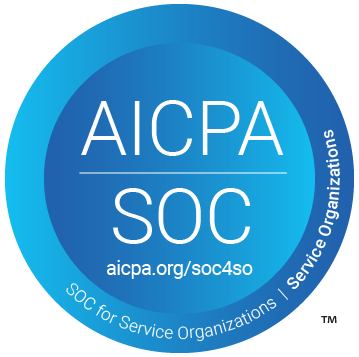Email marketing campaigns for your clinic patients can significantly improve patient experience and improve their attitude towards your healthcare service and a possible treatment they may have had. However, staying in regular touch with your past and prospective patients via email is often overlooked for reasons unrelated to medical practice or privacy issues.

The Return on Investment (ROI) of an average email marketing campaign is around $36 for every $1 invested, so considering email as a viable communications platform (however single-directional) is probably the best way to go for long-term benefits and increased traffic on your website. You can achieve the same effect through social media funneling if you run a private clinic, that traffic combined with a good conversion rate results in more future patients.
If you want to improve your conversion rate and increase your patients’ experience, follow our steps to create the best possible email for your private health clinic, dental clinic, or plastic surgery clinic.
First, you should not send too many emails daily. Instead, consider sending 1-2 emails to your newsletter subscribers monthly. The content should not be repetitive, and you should send emails only when there is something to communicate to your list.
We recommend sending different emails once a month, plus a regular one (possible roundup of blog posts) once a month. This should be enough to cover your basic communication needs and will not bother your patient readership too often so that they are not tempted to unsubscribe. Do not worry too much about overdoing emails; online services in the healthcare industry have been around for a while.
Once you’ve decided on the kinds of emails you will send each month or biweekly; it is time to focus on the email itself. When structuring your Healthcare email newsletter, you should pay attention to two tiers of information. The first tier relates to the contents of the email itself. The second tier relates to all the meta-elements you should pay attention to ensure your email is a pleasant experience and that your future healthcare emails are read. Focus on your target audience and speak their language.

The First Step
If you can adequately detect your audience’s age, interests, and language, ensure you include this information in your email. Of course, do not mention anything; make your speech more flexible and suited to the audience.
Speak Directly to Your Audience
Speaking of language, you should also talk directly to your audience. Address them frequently by referring to them as ‘you.’ Use other pronouns as well since they establish a closer tone and may positively impact establishing a good rapport with your healthcare customers early on.
Make It Personal
If local regulation allows for this, include a header in your emails where you address your healthcare email recipient by their name. This patient-centered health approach will help establish a good report and positively affect the patient. Nobody wants to be yet another number, so patients gravitate to doctors who can develop closer connections with them.
Use a Catchy Subject Line
A good subject line will attract readers’ attention and encourage them to open your email. The average American receives 40 emails daily, so ensuring your email stands out is essential. Using Caps Lock, but sporadically, will also provide extra visibility.
Include Physical Address in the Email
In some states, a physical address is required by law, but you should also include it in all emails so that people know WHERE you work. They can easily find this information on Google. Including it in your email takes one step away from prospective patients’ steps to reach you for a procedure.
Create Original Content
Creating Original Content has always been the best way to approach an audience. Both people and search engines want to see that you have something new to offer. While you may not develop a new procedure, ensuring your healthcare content writing team has a fresh approach will ensure you have something valuable to contribute to the market.
Vary the Type of Content Included
In making a variety of emails, you should consider the following types of email newsletters:
Educational emails
Educational emails – teaching your audience about new procedures in the market, new medicine, pain relievers, or even non-surgical procedures that your audience can benefit from,
A Roundup of Blog Posts
A roundup of blog posts – regularly posting on your blog will rank you better on search engines, so possible new patients will find you more frequently. Emailing the latest contents of your blog regularly will also increase the number of visitors and help establish a trusted brand image among your patients,
Informational Email Newsletter
Informational Email Newsletter – Offering new information on the clinic or your practice, such as work hours, new staff members, and other information your audience may want to hear. This can also help establish the image of your clinic as a friendly, family-like place,
Promotional Email Newsletter
Promotional Email Newsletter—A promotional email newsletter can inform your patients about any new procedures, discounts, and open-door events you may organize. In plastic surgery, it is common for clinics to use promotional emails to promote other clinics that may complement their services or even new surgeons who join their practice.
The Second Step
It would help if you implemented the second step only once. The first email in a series you send out should be a masterpiece you tweak on the off-page level to see whether different formatting approaches and styling can improve your click-through rate.
Use the Newsletter as a Portal to Your Website
Your newsletter does not bring much value on its own. However, the real power of email campaigns, and why they pay off so much, is that they can direct your audience where you need them – on your website. Every visit is counted here and may convert more readers into potential patients.
Write Mobile-Friendly Emails
Today, most users read emails on the go, on much smaller screens than your laptop screen. To ensure the body of your healthcare newsletter is easy to read, speak to experts – either a good content marketing agency or your IT and find out what they can do to make your healthcare emails more suited to the small screen.
Pay Attention to Formatting Specificities
Formatting specificities can include but are not limited to, text color, font size, visuals, text justification, and overuse of screen space. Here, you can also pay attention to negative space. Negative space can improve the page’s readability and increase the audience’s time in front of the screen.
Creating a positive patient experience on your website is likely to keep prospective and existing patients and those who come for informational purposes only on your website for longer. This reduces your bounce rate and increases your score on search engines.

Final Considerations
Newsletter emails in the healthcare niche offer a high ROI and are an excellent way to increase patient numbers and encourage past patients to return for more healthcare services. While creating an email sounds easy enough, creating a good one can be very difficult. Knowing your audience, the exact message you want to send, and the technicalities that make a good email will ensure a successful campaign and enable the sustainable growth of your healthcare practice.











